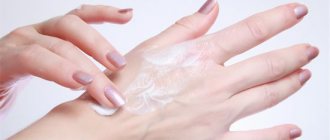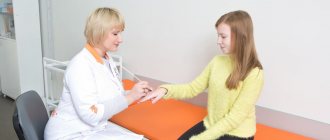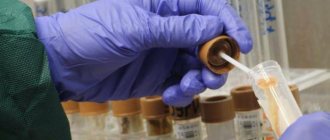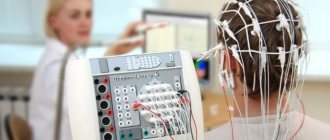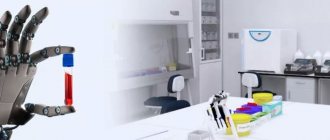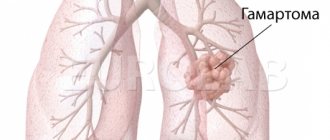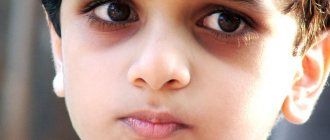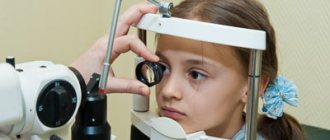Last updated: July 24, 2020
Allergic rashes in children are a very common and common occurrence. Most often, this disease manifests itself in the form of a rash, but the causes can be different. You will learn in this article how allergic rashes in children are treated and what they are like.
- For what reason does an allergic rash appear on a child's skin?
- What does a child's skin allergy look like?
- How to diagnose allergies?
- First aid and treatment
- What is done to prevent allergic rashes in children?
- Types of allergic reactions with photos
- Conclusion
Causes
Allergic rashes can occur in children from birth until the age of 7 years. This is explained by the fact that the immune system has not yet been formed. Below are the main causes of allergic reactions in children:
- Medicines, the body may react negatively to some components of medicines;
- Breast milk if the diet is not followed;
- Hygiene products and household chemicals;
- Plants and animals can also cause rashes;
- Ultra-violet rays;
- Various infections and diseases.
Crusts on the head
Crusts, or seborrheic dermatitis, look like dense scaly growths on the baby's head. They can also form on the neck, armpits, behind the ears and even in the groin area. Sometimes you may also notice redness or a rash. Usually the crusts disappear on their own within a few months. If the crusts are present only on the head, try to gradually comb them out with a soft brush when you wash your baby's hair. Sometimes you may need a special shampoo, which can be prescribed by your pediatrician.
What do allergic rashes look like?
There are a large number of types of allergy rashes in children, it all depends on the irritant that caused it. In many cases, exanthemas appear on the child’s body (this is the name given to various manifestations of allergic rashes):
- pustules (filled with pus);
- plaques;
- spots;
- vesicles (filled with liquid);
- blisters (large vesicles larger than 0.5 cm).
With food allergies in children, the rash can be found primarily on the cheeks and near the mouth. With a contact allergy, a rash or irritation will appear in the area where the allergen touched. If the child’s body reacts negatively to medications, inflammation will appear in the area of the lymph nodes.
Where skin rashes may appear
Small red rashes are the most common type of rash that can appear in children at different ages, especially in early childhood, preschool and primary school.
Small rashes without suppuration can appear on the scalp, face, armpits, shoulders, abdomen, back, buttocks, perineum, groin. Such rashes are typical for allergies (food, medication or cosmetic). They can also be the result of overheating and poor hygiene. This leads to diaper rash and prickly heat. In babies of the first year of life, the rash may cover the head, since thermoregulation is carried out through the skin in this area of the body.
The skin of the face may become covered with a red rash due to certain pathologies of a viral nature. In the case where the child was not given any suspicious new foods or medications, or there were no changes in lifestyle, rashes may still appear on the face. In this case, you should measure your temperature and consult a pediatrician.
Red rashes of various sizes and types can appear on the arms and legs of children against the background of infectious diseases of a viral and bacterial nature, scarlet fever, measles, leukemia.
It is quite difficult to detect colorless rashes, although over time they appear more pronounced. Most often, this type of rash indicates the initial stage of allergy development. Almost imperceptible rashes without a specific color or too pale, covering the body, can create a feeling of roughness when touched. This is similar to goosebumps running across the skin during fear or chills. The rashes are located close to each other and can be widespread.
Watery rashes are a clear sign of herpetic and pustular infectious diseases, allergies, insect bites and sunburn.
Bubbles filled with liquid contents may appear in the following places:
- in the facial area (nasolabial triangle, lips, nose);
- in the area of the sides and limbs, genitals, groin and inner thighs;
- in the anal area.
In this case, the development of an infection of pustular or herpetic origin can be suspected. In almost the same way, an allergic reaction to the use of skin care products occurs upon contact with chemicals and toxins, which cause a local reaction reminiscent of a chemical burn.
Due to prolonged exposure to sunlight, blistering lesions may appear on the skin, and the skin will be red and slightly swollen.
The appearance of blisters on the skin in the area of the hands and feet may indicate dyshidrosis - blockage of the sweat glands. The palms and heels may become covered with blisters due to the development of certain pathologies of a fungal nature.
How to diagnose allergies?
An allergic rash in children is often confused with an infectious one. If the treatment is incorrect, then the consequences of such a therapeutic course will not be the best. Before choosing an effective remedy, you need to learn to distinguish one disease from another. Only a doctor can make an accurate diagnosis, since a visual examination is not always enough to determine the cause of the disease; tests are required.
| Features | Allergic rash | Infection |
| General form | It can be in the form of both small dots and large blisters. In addition to them, there are often crusts, erosions and serous wells (ulcers from which fluid oozes). | The rashes are pinpoint and do not “merge” into a large spot. |
| Place of appearance | Face (forehead, cheeks, chin). Neck, arms, legs, buttocks. Rarely – stomach, back. | Belly, back. Rarely – arms, legs. Very rarely - forehead. |
| Heat | The temperature is rare, and if it rises, it is not higher than 37-38°C. | The disease is accompanied by fever, from 37°C to 41°C. |
| Itching | Happens. | Happens. |
| Swelling | Well visible. In some situations it is life-threatening. | They happen very rarely. |
| Associated symptoms | Lacrimation, conjunctivitis, hyperemia of the mucous membrane of the eye, decreased blood pressure, cough, upset stomach. | Running nose, general loss of strength, body aches. |
| How quickly it goes | Often the rash goes away immediately after taking the medicine. | Remains until the course of treatment is completed. |
Diaper rash
Diaper rash, or diaper rash, is a reddish rash that appears on your baby's skin under and around the diaper. The structure can be either flat or convex. Can cause significant discomfort to the baby. Diaper rash can occur if your baby spends too much time in a wet diaper or if the diaper is too small. If the cause of diaper rash is eliminated, it usually goes away in three to four days. Therefore, try to change your baby's diaper as often as possible. Clean the area under the diaper with wet wipes or a cloth soaked in water and, if possible, give your baby air baths. It is also recommended to use diaper rash cream to create a protective barrier on the skin.
Atopic dermatitis
Atopic dermatitis (or itchy rash) sometimes appears in babies after the first month of life. You may notice your baby's cheeks are red and there are red, dry, flaky patches of skin on the elbow or behind the knees. In infants, atopic dermatitis appears more often on the body than on the face. The rash can be mild, but can also be accompanied by severe itching and cause great discomfort to the baby. If you suspect your baby has atopic dermatitis, consult your pediatrician - he will be able to prescribe an ointment or cream for treatment and care. To get rid of this unpleasant condition or prevent its recurrence, use mild, unscented soap to care for your baby, choose clothes made of soft fabric, and bathe your baby no more than three times a week. To wash children's clothes, use unscented products.
First aid and treatment
If children develop an allergic rash on their skin, it is strictly forbidden to squeeze pimples or open blisters. It is necessary to explain to the child that it is also forbidden to scratch the sores.
If he is still too small, make sure that he does not touch the wounds with dirty hands. He can get an infection, and this will only worsen his condition.
Treatment of rashes in children is selected depending on the type of disease. Parents who do not know how to treat allergic rashes in children should not select medications on their own.
What parents need to do
To assess the situation, parents need to examine the child’s skin by undressing him. It is necessary to determine the nature of the rash (vesicle, pustule, papule, etc.), and its area. It is necessary to remember and analyze the situation preceding the appearance of a rash on the body.
The next step is to measure the temperature, examine the throat and tonsils, and identify other signs if any. You need to decide whether to call a doctor at home or visit a medical facility yourself.
What not to do if a rash appears
Prohibited actions:
- squeezing out pustules;
- scratching the rash;
- self-treatment;
- opening of bubbles;
- applying brightly colored products to the skin, as this complicates diagnostic measures.
Do not forget that some infectious diseases accompanied by the appearance of skin rashes are contagious. As a result, you should not go to the clinic with your child, since you can infect someone while waiting your turn. In such a situation, it is recommended to call a doctor home.
How to avoid allergies in children?
Preventive measures will prevent the child from developing an allergic rash. Doctors give the following recommendations:
- Make sure that the baby does not come into contact with the allergen (remove allergenic foods from his diet; if necessary, change baby powder, soap or dishwashing liquid.
- Maintain order in his room, regularly do wet cleaning.
- If there are pets in the house, keep them clean.
- Strengthen the baby’s immunity (walk more often, play sports).
- Do not violate your doctor’s recommendations for taking medications.
Rash on the body: insect bites
In practice, I deal with insect bites, especially midges and mosquitoes, most often. Changes on the skin look like pink or reddish swollen spots. This rash occurs on the palms, legs and face, that is, on open areas of the body, often after sleep. They do not affect the general condition of the baby in any way, only mild itching appears.
If the child is not allergic to mosquito bites, then special treatment will not be required. It is enough to use fumigators that repel insects, and the bite sites can be lubricated with anti-inflammatory cream or ointment. You should only consult a doctor if the bites do not go away for a long time or you are not sure what insects caused them.
Examples of rashes with photos
Colorless rash "goosebumps"
Exudative diathesis
Hives
Food allergies
Scabies
Scabies is a rash caused by microscopic mites that burrow into the skin and lay eggs. After this, the child's scabies rash usually appears within two to four weeks. Scabies occurs in both infants and older children, but it manifests itself in different ways. In infants, it appears as fluid-filled pimples, and the rash usually occurs only on the palms of the hands and soles of the feet. In older children, you may notice small bumps next to reddened areas of the skin - the itch burrows made by the mite. If you suspect your child has scabies, consult a doctor. The specialist will be able to make a scraping to exclude or confirm the disease and, if necessary, prescribe treatment. Because scabies is a contagious dermatological disease, your doctor may recommend treatment for the entire family.
Impetigo
Impetigo is a contagious skin disease that usually affects the nose, mouth and ears. The infection is caused by staph or streptococcal bacteria, and a baby who gets impetigo will need to take antibiotics. The doctor will order a test to find out what bacteria is causing the infection and then determine the course of treatment. Impetigo is contagious as long as the child has the rash, which sometimes forms blisters and eventually crusts over. At this stage, you need to avoid the baby's contact with other children. Avoid touching the rash to prevent the infection from spreading.
Cross-reactions with other foods
Children with allergies to the following foods may react to other foods:
Cow's milk allergy: 90% also react to goat's milk and 40% to soy milk.
Egg: in 5% there is a reaction to chicken meat
Peanuts: In 5% of cases there is a reaction to other legumes (such as peas or beans). In 30% there is hypersensitivity to tree nuts.
Fish: in 10% a reaction to seafood is also observed.
Melon: 90% reacts to bananas and avocados
Ragweed pollen allergies can cause a cross-reaction with all melons, bananas and tomatoes.
Birch pollen allergies can cross-react with raw potatoes, carrots, celery and apples.
Grass pollen allergies may cross-react with tomatoes and kiwis.
